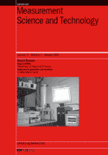
MEASUREMENT SCIENCE and TECHNOLOGY
Scope & Guideline
Pioneering Insights in Measurement Science and Engineering
Introduction
Aims and Scopes
- Measurement Techniques Development:
The journal emphasizes the development of novel measurement techniques that enhance precision and efficiency in various applications, including but not limited to mechanical, electrical, and thermal measurements. - Sensor Technology Innovations:
Research related to the design, implementation, and enhancement of sensors for measuring physical phenomena is a core area of focus, particularly sensors that offer high sensitivity and specificity. - Data Fusion and Analysis:
The integration of data from multiple sources to improve measurement accuracy and reliability is a significant theme, often utilizing advanced algorithms and machine learning techniques. - Fault Diagnosis and Predictive Maintenance:
The journal highlights innovative approaches for fault diagnosis in machinery and systems, including predictive maintenance methodologies that leverage measurement data to anticipate failures. - Metrology Standards and Calibration Techniques:
The journal publishes studies on the establishment and improvement of metrology standards, calibration methods, and traceability in measurements to ensure accuracy and consistency. - Application in Emerging Technologies:
Research that applies measurement science to emerging technologies, such as nanotechnology, biotechnology, and renewable energy, is encouraged, reflecting the journal's commitment to addressing contemporary challenges.
Trending and Emerging
- Machine Learning and AI in Measurement:
An increasing number of studies are integrating machine learning and AI techniques to enhance measurement precision, automate data analysis, and improve fault diagnosis capabilities. - Advanced Sensor Technologies:
There is a growing focus on the development of advanced sensors, such as those utilizing nanotechnology and smart materials, which offer enhanced sensitivity and multifunctional capabilities. - Real-time Measurement Systems:
Research is trending towards the development of real-time measurement systems that can provide immediate feedback, particularly in industrial applications where rapid decision-making is crucial. - Digital Twin Technology:
The application of digital twin technology in measurement processes is emerging as a significant theme, allowing for virtual modeling and simulation of physical systems to improve accuracy and predictive capabilities. - Environmental and Sustainability Measurements:
There is a notable increase in research focused on measurement techniques that support environmental monitoring and sustainability efforts, such as emissions tracking and resource utilization efficiency. - 3D Imaging and Measurement Techniques:
Advancements in 3D imaging technologies, including techniques for high-resolution surface measurements and volumetric analysis, are gaining prominence in the journal's recent publications.
Declining or Waning
- Traditional Measurement Techniques:
There is a noticeable decrease in publications focused on traditional measurement techniques, such as basic mechanical and electrical measurements, as the field shifts towards more advanced and automated methods. - Low-Resolution Measurement Methods:
Research on low-resolution measurement techniques appears to be waning, with a preference for high-resolution and precise measurement technologies that meet contemporary scientific and industrial demands. - Generic Sensor Applications:
Papers that discuss generic or non-specific applications of sensors without innovative advancements are becoming less frequent, as the focus shifts to specialized and high-performance sensor systems. - Basic Calibration Methods:
There has been a decline in studies centered around basic calibration techniques, with more emphasis placed on complex and adaptive calibration systems that are integrated with machine learning and AI.
Similar Journals
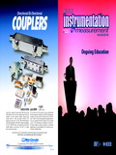
IEEE INSTRUMENTATION & MEASUREMENT MAGAZINE
Illuminating the Path of Measurement ExcellenceIEEE Instrumentation & Measurement Magazine, published by the esteemed IEEE - Institute of Electrical and Electronics Engineers Inc, is a leading source for advancements in the fields of electrical and electronic engineering, as well as instrumentation. With a well-established history from 1998 to 2024, this quarterly journal holds a significant position in the Q2 category for both Electrical and Electronic Engineering and Instrumentation, reflecting its impact and relevance in these fields. Its current ranking within Scopus demonstrates its recognition, being positioned in the 60th percentile among its peers. Although this journal does not offer Open Access options, it is recognized for providing in-depth articles and research findings that cater to the needs of researchers, professionals, and students alike. The magazine serves as an essential platform for disseminating knowledge, discussing emerging technologies, and facilitating communication among experts passionate about instrumentation and measurement. Join the community of innovators influencing the future of technology through the insightful content housed within this publication.

JOURNAL OF RESEARCH OF THE NATIONAL INSTITUTE OF STANDARDS AND TECHNOLOGY
Driving Progress in Measurement and Technology.Welcome to the Journal of Research of the National Institute of Standards and Technology, published by the National Institute of Standards and Technology (NIST). This esteemed journal, identifiable by its ISSN 1044-677X and E-ISSN 2165-7254, serves as a critical platform for disseminating valuable research in the field of engineering, particularly with its focus on standards and technology applications. Operating as an Open Access journal since 2012, it ensures that all published works are freely accessible, fostering greater collaboration and advancement within the scientific community. Despite its coverage discontinuation in Scopus, the journal maintains a respectable Q3 quartile ranking in Engineering (Miscellaneous), with a Scopus rank of 118 out of 302, placing it within the 61st percentile. Based in Gaithersburg, Maryland, this publication not only supports the research ecosystem but also contributes significantly to advancing knowledge and practices in measuring and standards, making it an indispensable resource for researchers, professionals, and students engaged in related fields.

ACS Measurement Science Au
Transforming Research through Open Access InnovationsACS Measurement Science Au, published by the American Chemical Society, is a leading open-access journal that has been at the forefront of measurement science since its inception in 2021. With its strong impact and esteemed reputation in the field, the journal has achieved impressive Scopus rankings, including Q1 in Analytical Chemistry and Q2 in Electrochemistry, reflecting its commitment to high-quality research and innovation. As a vital resource for researchers, professionals, and students alike, ACS Measurement Science Au covers a broad scope encompassing advanced measurement techniques across various domains, including spectroscopy and electrochemistry. With its open-access model, the journal ensures that cutting-edge research is readily available to the global scientific community, supporting collaboration and knowledge sharing. By fostering discussions that bridge different disciplines within measurement science, this journal plays a crucial role in advancing the forefront of analytical methods and instrumentation.
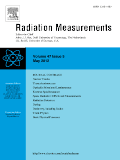
RADIATION MEASUREMENTS
Advancing the Frontiers of Radiation Science.RADIATION MEASUREMENTS is a highly regarded academic journal published by Pergamon-Elsevier Science Ltd, focusing on the interdisciplinary field of radiation science and instrumentation. With an ISSN of 1350-4487 and an E-ISSN of 1879-0925, this journal aims to disseminate cutting-edge research and practical advancements from 1994 to 2024. It holds a commendable position in the Scopus rankings, being categorized in the top quartiles (Q2) for both Instrumentation and Radiation, reflecting its significance in the scientific community with a notable percentile of 64th and 59th, respectively. Although it does not offer Open Access options, the journal serves as a vital resource for researchers, professionals, and students seeking to explore innovations that shape the understanding and measurement of radiation phenomena. With a commitment to high-quality research, RADIATION MEASUREMENTS continues to contribute essential knowledge in the fields of physics and astronomy, positioning itself as a key publication for those dedicated to advancing radiation technology and its applications.
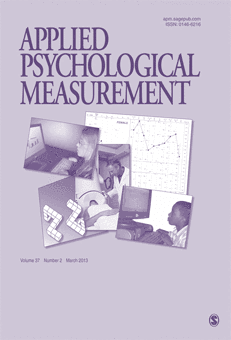
APPLIED PSYCHOLOGICAL MEASUREMENT
Bridging Theory and Practice in Psychological AssessmentApplied Psychological Measurement is a leading journal in the field of psychology and social sciences, published by SAGE Publications Inc. since its inception in 1977. With an impressive 2023 impact factor and consistently ranking in the Q1 quartile for both Psychology and Social Sciences categories, this journal plays a pivotal role in disseminating high-quality research that advances the understanding of psychological assessment and measurement methodologies. The journal embraces a diverse array of research contributions, ranging from empirical studies to theoretical discussions, covering critical topics that affect practitioners and researchers alike. With its comprehensive scope and rigorous peer-review process, Applied Psychological Measurement serves as an essential resource for researchers, professionals, and students aiming to deepen their knowledge and application of psychological measurement within various social contexts. The journal is based in the United States, ensuring a prominent platform for international discourse.
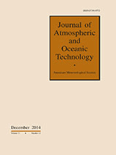
JOURNAL OF ATMOSPHERIC AND OCEANIC TECHNOLOGY
Bridging Science and Technology for a Sustainable FutureJOURNAL OF ATMOSPHERIC AND OCEANIC TECHNOLOGY, published by the American Meteorological Society, serves as a leading platform for disseminating innovative research in the fields of atmospheric and oceanic sciences. With an ISSN of 0739-0572 and an E-ISSN of 1520-0426, this esteemed journal encompasses a wide range of topics, from advanced observation techniques and operational meteorology to oceanographic technologies, making it indispensable for researchers and professionals alike. The journal's substantial impact is reflected in its ranking in Q2 for Atmospheric Science and Q1 for Ocean Engineering, promoting high-quality scholarship in these critical areas. Its Scopus rankings further affirm its relevance, being positioned in the 67th and 52nd percentiles in their respective categories. Though not open access, the journal’s rich archives cover vital research from 1985 to 2024, ensuring that its contributions remain accessible to the community. The Journal of Atmospheric and Oceanic Technology continues to be a cornerstone for those dedicated to advancing our understanding of weather, climate, and aquatic systems, encouraging innovative applications that address global challenges.

Atmospheric Measurement Techniques
Elevating Research Standards in Atmospheric Science.Atmospheric Measurement Techniques, published by COPERNICUS GESELLSCHAFT MBH, is a premier open-access journal that has been contributing to the field of atmospheric science since 2008. With its focus on advancing techniques for atmospheric observations and measurements, the journal has established itself as an authoritative source with a Q1 ranking in the Atmospheric Science category for 2023, placing it among the top journals in the field. Based in Germany, its commitment to accessibility ensures that researchers, professionals, and students can freely engage with high-quality research that influences environmental monitoring, climate studies, and atmospheric modeling. As of 2023, it successfully ranks 32nd out of 148 in Earth and Planetary Sciences—demonstrating its significant impact in the scientific community with a commendable 78th percentile status within this dynamic domain. Researchers focusing on innovative atmospheric measurement techniques will find this journal a vital platform for disseminating their findings and collaborating on cutting-edge research.

MAPAN-Journal of Metrology Society of India
Elevating standards in metrology research.MAPAN - Journal of Metrology Society of India, published by the Metrology Society of India, is a premier academic journal dedicated to the field of metrology, encompassing a diverse range of topics within physics and astronomy. With an ISSN of 0970-3950 and an E-ISSN of 0974-9853, this journal has established a solid reputation since its inception in 2009, converging into contemporary insights and practices through 2024. Achieving a commendable Q3 ranking in the 2023 Scopus categories, it sits confidently within the field's landscape, ranked 40 out of 81 and placing within the 51st percentile. Despite its accessible nature, the journal does not currently offer open access. MAPAN aims to disseminate cutting-edge research and innovations in metrology, supporting a vibrant community of researchers, professionals, and students striving to explore the precise measurements and standards crucial for advancements in science and technology. As it continues to foster scholarly exchange, MAPAN plays a significant role in elevating metrology research and influencing its application within various scientific disciplines.
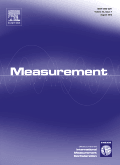
MEASUREMENT
Transforming Data into Knowledge Through Rigorous MeasurementMEASUREMENT is a premier academic journal published by Elsevier Science Ltd, dedicated to advancing research in the fields of Applied Mathematics, Condensed Matter Physics, Electrical and Electronic Engineering, Statistics, and Instrumentation. With an impressive Q1 ranking in multiple categories as of 2023, MEASUREMENT stands out with its strong impact factor, indicative of its high-quality contributions to interdisciplinary research. Since its inception in 1983, the journal has maintained a commitment to publishing innovative methodologies, cutting-edge technologies, and significant advances in measurement science. Although currently not an Open Access publication, the journal provides vital access options through institutional subscriptions, ensuring that researchers, professionals, and students can delve into a wealth of knowledge throughout its pages, including both theoretical and practical applications. The journal’s rigorous peer-review process ensures that only the highest quality research is disseminated, making it an essential resource for anyone involved in quantitative analysis and measurement in diverse scientific domains.
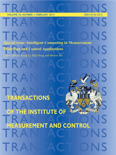
TRANSACTIONS OF THE INSTITUTE OF MEASUREMENT AND CONTROL
Connecting Scholars and Practitioners in Measurement ScienceTRANSACTIONS OF THE INSTITUTE OF MEASUREMENT AND CONTROL, published by SAGE Publications Ltd, is a prestigious journal that has been at the forefront of research in measurement and control since its inception in 1979. With its ISSN 0142-3312 and E-ISSN 1477-0369, this UK-based journal is indexed in reputable databases, showcasing its impact in the field, highlighted by a notable Q2 ranking in Instrumentation for 2023. The journal serves as a vital platform for scholars and practitioners alike, publishing high-quality, peer-reviewed articles that span a range of topics related to measurement technology and control systems. With an increasing focus on interdisciplinary approaches, TRANSACTIONS OF THE INSTITUTE OF MEASUREMENT AND CONTROL strives to advance the understanding and application of innovative measurement and control methodologies, making it an essential resource for academics, industry professionals, and students aiming to enhance their knowledge and expertise in this dynamic field. Although it operates under a traditional subscription model, the journal's commitment to disseminating cutting-edge research remains unwavering, inviting contributions that push the boundaries of instrumentation and control science.